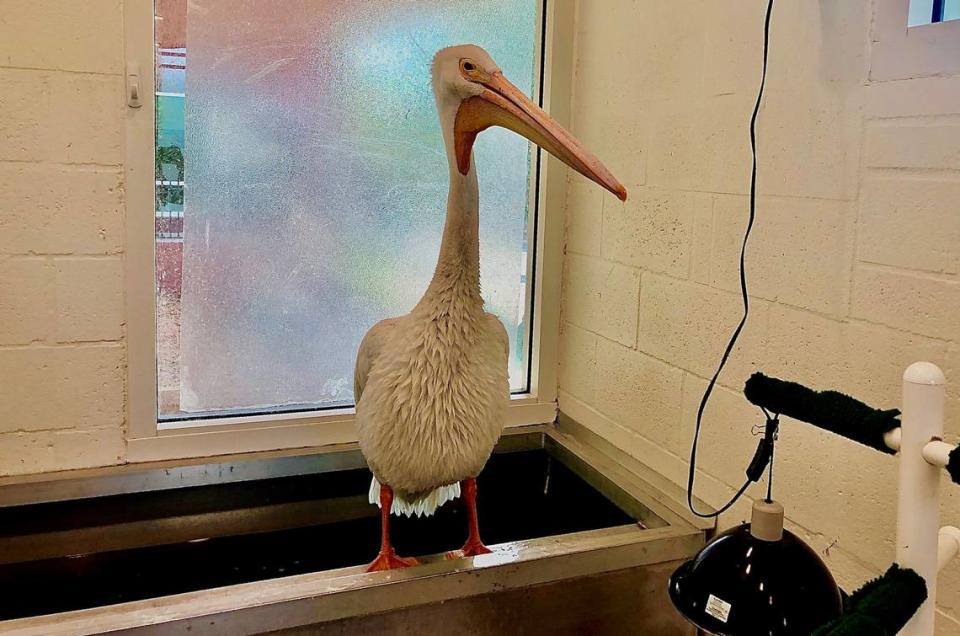A Florida pelican ate a fish so big and spiny it got stuck. Then the bird sent a signal
An American White Pelican indulged a bit too much at the seafood buffet and seemed to know it needed help getting its meal down — or out.
According to rescuers with the Conservancy of Southwest Florida in Naples, the pelican was hanging out by a boat dock by itself.
“When approached, the pelican did not fly away indicating it was in need of help and was brought to the von Arx Wildlife Hospital,” the conservation group posted on its Facebook page this week.

What vets did to save the pelican
During an exam, vets found that the bird was having trouble breathing and was trying to throw up. That’s when they looked closer.
Vets checked the pelican’s pouch and saw a large sheepshead carcass lodged deep in the bird’s esophagus. The fish was too big for the bird to swallow and its spines were preventing the bird from regurgitating the carcass.
“Without intervention and safe removal of the fish the pelican wouldn’t have made it,” the conservancy noted.
The pelican is recovering in the conservancy’s shorebird pool on its 21-acre grounds.
Pelican protection tip
This overstuffed bird may also serve as a reminder to not feed pelicans for their own safety.
“Typically, when a pelican comes in with a large fish stuck in its throat, it is after an angler tossed the bird some scraps after fileting a catch. Those fish are often far too large for a pelican to ingest and, with the spines much more prominent after a filet, they will more easily get stuck in a pelican’s throat,” said the Conservancy’s Greg Willette in an email to the Miami Herald.
According to von Arx Wildlife Hospital, a brown pelican and a green anole were also among 67 animals admitted in the first week of December. Other admissions include two great blue herons, a mottled duck, an osprey, a marsh rabbit and a glass lizard.
Remember the python vs. the gator?
There have been other Florida critters that bit off more than they could chew. One even made global headlines.
In September 2005, an Everglades National Park ranger and a helicopter pilot found a dead Burmese python that had apparently swallowed an American alligator.
In a photo that was seen across the world, the tail and hind limbs of the dead alligator protruded from a hole in the mid-body of the dead, 12.5-foot headless python. The python’s stomach surrounded the head, shoulders and forelimbs of the alligator that was otherwise largely intact except for open wounds on its skull behind the eyes and its shoulder.



Watch a fearless kingsnake devour a venomous timber rattlesnake in Georgia

